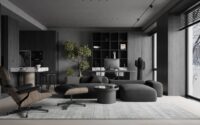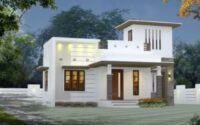20×30 House Interior Design: Creating a Cozy Home in a Compact Space
20×30 house interior design presents a unique challenge: maximizing space and functionality within a limited footprint. This guide explores the intricacies of crafting a comfortable and stylish home in a 20×30 square-foot space, addressing everything from layout and functionality to style and storage solutions.
From exploring various design styles and creating a cohesive color palette to maximizing natural light and selecting the right furniture, this comprehensive resource provides practical tips and inspiring ideas for transforming a compact space into a dream home.
Whether you’re embarking on a new construction project or considering a renovation, understanding the nuances of 20×30 house interior design is crucial for creating a home that meets your needs and reflects your personal style. This guide will delve into the key aspects of design, offering insights and strategies for maximizing space, optimizing functionality, and achieving a visually appealing and comfortable living environment.
Understanding the 20×30 Footprint
A 20×30 foot footprint presents a unique set of challenges and opportunities for home design. It’s a compact space that requires careful planning to maximize functionality and comfort.
Challenges of a 20×30 Footprint, 20×30 house interior design
A 20×30 footprint can be challenging for creating a spacious and comfortable living environment. The limited square footage necessitates careful consideration of space allocation and furniture selection. Here are some key challenges:
- Limited Square Footage:The 600 square foot area can feel cramped if not designed efficiently. This requires prioritizing essential spaces and making compromises on non-essential ones.
- Optimizing Layout:With limited space, the layout must be carefully planned to ensure optimal flow and functionality. This involves considering the placement of walls, doors, windows, and furniture.
- Storage Solutions:Finding adequate storage space within a small footprint can be a challenge. Innovative storage solutions are crucial to keep the house organized and clutter-free.
- Balancing Privacy:A 20×30 footprint can make it difficult to create separate and private areas for different activities. This requires clever use of dividers, screens, or multi-functional furniture.
Opportunities of a 20×30 Footprint
Despite the challenges, a 20×30 footprint offers opportunities for creating a cozy and efficient home. Here are some key advantages:
- Cost-Effectiveness:Smaller homes generally cost less to build and maintain. This can be a significant advantage, especially for budget-conscious homeowners.
- Energy Efficiency:Smaller homes require less energy to heat and cool, leading to lower utility bills. This can be a significant financial and environmental benefit.
- Minimalism:A smaller footprint encourages a minimalist approach to living, which can be beneficial for reducing clutter and promoting a sense of calm.
- Flexibility:A well-designed 20×30 footprint can be surprisingly flexible, offering the potential for multiple configurations to suit different lifestyles.
Examples of Successful 20×30 House Designs
Several successful 20×30 house designs demonstrate how to maximize space utilization and create comfortable living environments. These designs often employ:
- Open-Concept Layouts:Combining living, dining, and kitchen areas into a single space creates a sense of spaciousness. This approach is often used in small homes to maximize visual flow and create a sense of openness.
- Multi-Functional Furniture:Using furniture with multiple functions, such as a sofa bed or a dining table that doubles as a workspace, can maximize space utilization. This is essential for creating a functional and comfortable home within a limited footprint.
- Built-In Storage:Incorporating built-in storage solutions, such as shelves, cabinets, and closets, can significantly increase storage capacity without taking up valuable floor space. This approach is particularly effective in smaller homes, where every inch counts.
Key Considerations for Maximizing Space Utilization
Maximizing space utilization in a 20×30 house is crucial for creating a comfortable and functional living environment. Here are some key considerations:
- Prioritize Essential Spaces:Focus on creating well-defined areas for essential functions like sleeping, cooking, and dining. Consider prioritizing these spaces over less essential ones, such as a formal dining room or a large guest bedroom.
- Vertical Space:Utilize vertical space to maximize storage capacity. This can include built-in shelves, cabinets, and lofts. It is essential to create a sense of spaciousness without feeling cramped.
- Natural Light:Maximize natural light by using large windows and skylights. This can make the space feel larger and brighter.
- Light Colors:Use light colors for walls and furniture to create a sense of spaciousness. This is particularly important in smaller homes, where darker colors can make the space feel cramped.
- Mirrors:Strategic placement of mirrors can create the illusion of more space. This technique is often used in small homes to make the space feel larger and more inviting.
Lighting and Natural Light: 20×30 House Interior Design
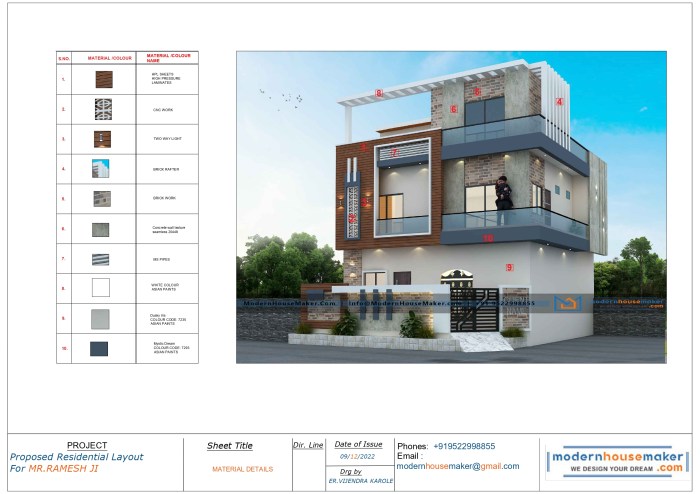
A well-designed lighting plan is crucial for a 20×30 house, enhancing its functionality and aesthetics. By strategically incorporating both natural and artificial light sources, you can create a welcoming and comfortable living environment.
Maximizing Natural Light
Maximizing natural light is essential for a 20×30 house. It contributes to a brighter, more spacious feel, reduces reliance on artificial lighting, and offers numerous health benefits.
Designing a 20×30 house interior requires careful consideration of space optimization. If you’re thinking of maximizing vertical space, a two-story design can be a great option. You can find inspiration and ideas for 2 storey house design interior that can help you create a functional and stylish living space within your 20×30 footprint.
With smart planning, you can create a comfortable and inviting home that utilizes every square foot effectively.
- Strategic Window Placement:Large windows, especially those facing south, maximize sunlight penetration. Consider using bay windows, which project outwards to capture more sunlight.
- Skylights:Skylights provide a direct connection to the sky, flooding the interior with natural light, especially in areas with limited window space.
- Light-Reflecting Surfaces:Using light-colored paint and reflective materials like mirrors on walls and ceilings can amplify natural light throughout the house.
Artificial Lighting
Artificial lighting plays a vital role in creating different moods and ambiance within the house. Here’s a table showcasing various types of light fixtures and their suitability for different areas:
| Light Fixture | Suitability |
|---|---|
| Recessed Lighting | General illumination in hallways, kitchens, and living rooms |
| Pendant Lights | Task lighting over kitchen islands, dining tables, and workspaces |
| Track Lighting | Flexible lighting for highlighting artwork or specific areas in living rooms and bedrooms |
| Chandeliers | Statement lighting for formal dining rooms and foyers |
| Sconces | Accent lighting in hallways, bedrooms, and bathrooms |
| Table Lamps | Ambient lighting in living rooms, bedrooms, and reading nooks |
Lighting Plan
A comprehensive lighting plan for a 20×30 house should consider both natural and artificial light sources, ensuring optimal illumination for each area.
- Living Room:Large windows for natural light, track lighting for highlighting artwork, and table lamps for ambient lighting.
- Kitchen:Large windows for natural light, recessed lighting for general illumination, and pendant lights over the kitchen island for task lighting.
- Dining Room:A chandelier as a statement piece, and ambient lighting from sconces or table lamps.
- Bedrooms:Windows for natural light, bedside table lamps for reading, and ceiling lights for general illumination.
- Bathrooms:Windows for natural light, recessed lighting for general illumination, and sconces for vanity lighting.
Furniture Selection and Placement
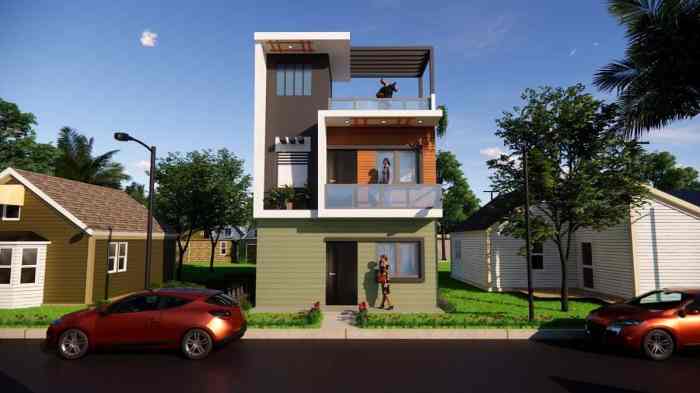
Furniture selection and placement are crucial aspects of interior design, especially in a smaller space like a 20×30 house. Careful consideration of functionality, size, and style is essential to maximize space and create a comfortable and inviting environment.
Designing a 20×30 house interior can be a fun challenge, especially when you’re working with limited space. A good approach is to prioritize functionality and maximize flow. You can find inspiration from designs for homes with similar square footage, such as 1200 square feet house interior design , which often feature clever storage solutions and multi-purpose rooms.
With careful planning, you can create a comfortable and stylish 20×30 house that meets your needs.
Furniture Selection
Choosing the right furniture is paramount for creating a functional and aesthetically pleasing space. Here are some key considerations:
- Functionality:Prioritize furniture that serves multiple purposes. For instance, a sofa bed can double as a guest bed, and a coffee table with storage can help keep clutter at bay.
- Size:Measure your rooms carefully and choose furniture that fits comfortably without overwhelming the space. Consider using a floor plan or furniture layout tool to visualize how furniture will fit before purchasing.
- Style:Choose furniture that complements the overall style of your home. If you prefer a modern aesthetic, opt for clean lines and minimalist designs. If you prefer a traditional look, consider pieces with ornate details and warm colors.
Furniture Layout
A well-planned furniture layout is essential for creating a comfortable and functional flow within your home. Here are some tips for maximizing space:
- Traffic Flow:Ensure that there is ample space for movement between furniture pieces. Aim for at least 3 feet of clearance around furniture, especially in high-traffic areas like hallways and doorways.
- Focal Points:Create visual interest by placing key furniture pieces around focal points, such as a fireplace or a large window.
- Balance:Distribute furniture evenly throughout the room to create a sense of balance and harmony. Avoid clustering furniture in one area.
Scale and Proportion
Scale and proportion are essential considerations when selecting furniture for a smaller space. The goal is to create a sense of balance and harmony, ensuring that furniture pieces are not too large or too small for the room.
Designing a 20×30 house interior allows for ample space to explore different design styles and create a cohesive flow. You can incorporate various elements, from modern minimalism to traditional elegance. If you’re looking for inspiration on smaller spaces, you can also check out ideas for 10 marla house interior design , which often involves maximizing functionality and creating a sense of openness.
Ultimately, the key to a successful 20×30 house interior is to create a space that reflects your personal style and meets your practical needs.
“Furniture should be in scale with the room. A large sofa in a small living room will make the space feel cramped, while a small coffee table in a large living room will look lost.”
- Room Size:Consider the overall size of the room when selecting furniture. Smaller rooms may require furniture with a smaller footprint to avoid feeling cramped.
- Ceiling Height:Take into account the ceiling height when choosing furniture. Tall furniture can make a room feel smaller, while low furniture can make a room feel more spacious.
- Visual Balance:Create visual balance by using furniture of different sizes and shapes to create a sense of harmony.
Ending Remarks
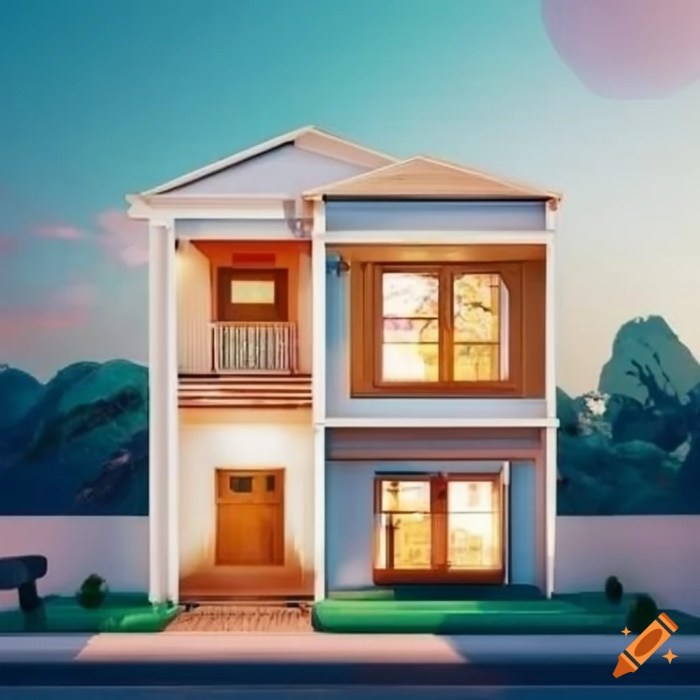
Designing a 20×30 house interior requires careful planning and a creative approach to maximize space and functionality. By incorporating smart layout solutions, utilizing natural light effectively, and selecting furniture and storage solutions that fit the space, you can create a home that is both stylish and comfortable.
Remember, the key is to embrace the challenges of a smaller footprint and transform them into opportunities for innovative design and efficient living.
Detailed FAQs
What are some common layout options for a 20×30 house?
Common layout options include open floor plans, traditional layouts, and multi-level designs. Open floor plans create a sense of spaciousness, while traditional layouts offer more defined spaces. Multi-level designs can maximize vertical space.
How can I make a small house feel bigger?
Use light colors, maximize natural light, and choose furniture with a clean and uncluttered design. Consider using mirrors to create the illusion of more space.
What are some budget-friendly materials for a 20×30 house?
Consider using materials like laminate flooring, vinyl siding, and engineered countertops. These options are affordable and offer durability.
What are some creative storage solutions for a small house?
Incorporate built-in cabinets, shelves, and under-bed storage. Use vertical space efficiently with wall-mounted organizers and floating shelves.

